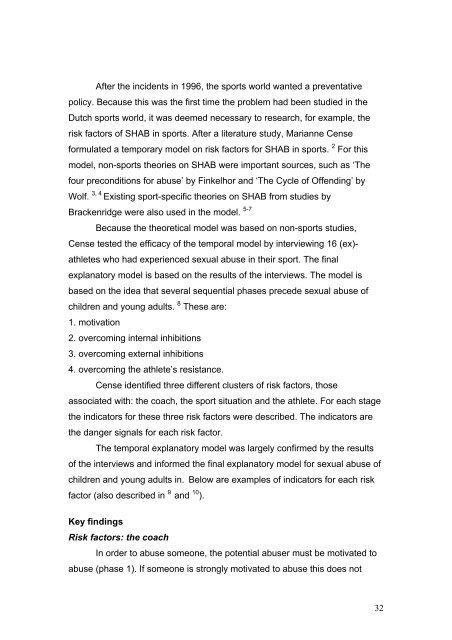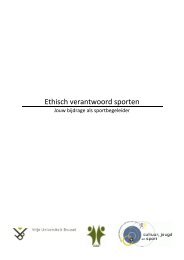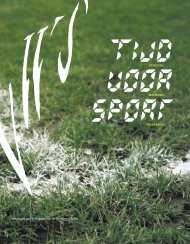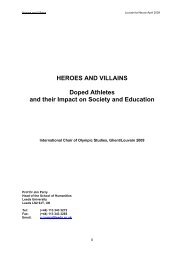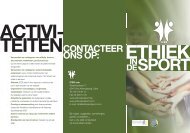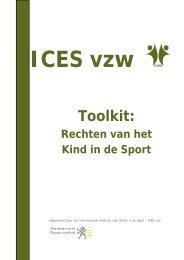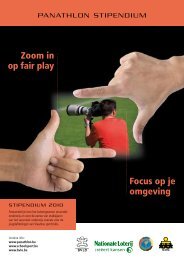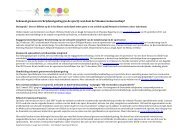Part 3 GLOBAL ISSUES: HARASSMENT AND ABUSE RESEARCH
Part 3 GLOBAL ISSUES: HARASSMENT AND ABUSE RESEARCH
Part 3 GLOBAL ISSUES: HARASSMENT AND ABUSE RESEARCH
You also want an ePaper? Increase the reach of your titles
YUMPU automatically turns print PDFs into web optimized ePapers that Google loves.
After the incidents in 1996, the sports world wanted a preventative<br />
policy. Because this was the first time the problem had been studied in the<br />
Dutch sports world, it was deemed necessary to research, for example, the<br />
risk factors of SHAB in sports. After a literature study, Marianne Cense<br />
formulated a temporary model on risk factors for SHAB in sports. 2 For this<br />
model, non-sports theories on SHAB were important sources, such as ‘The<br />
four preconditions for abuse’ by Finkelhor and ‘The Cycle of Offending’ by<br />
Wolf. 3, 4 Existing sport-specific theories on SHAB from studies by<br />
Brackenridge were also used in the model. 5-7<br />
Because the theoretical model was based on non-sports studies,<br />
Cense tested the efficacy of the temporal model by interviewing 16 (ex)athletes<br />
who had experienced sexual abuse in their sport. The final<br />
explanatory model is based on the results of the interviews. The model is<br />
based on the idea that several sequential phases precede sexual abuse of<br />
children and young adults. 8 These are:<br />
1. motivation<br />
2. overcoming internal inhibitions<br />
3. overcoming external inhibitions<br />
4. overcoming the athlete’s resistance.<br />
Cense identified three different clusters of risk factors, those<br />
associated with: the coach, the sport situation and the athlete. For each stage<br />
the indicators for these three risk factors were described. The indicators are<br />
the danger signals for each risk factor.<br />
The temporal explanatory model was largely confirmed by the results<br />
of the interviews and informed the final explanatory model for sexual abuse of<br />
children and young adults in. Below are examples of indicators for each risk<br />
factor (also described in 9 and 10 ).<br />
Key findings<br />
Risk factors: the coach<br />
In order to abuse someone, the potential abuser must be motivated to<br />
abuse (phase 1). If someone is strongly motivated to abuse this does not<br />
32


